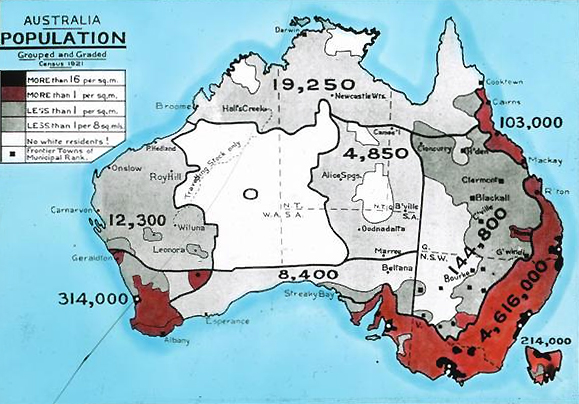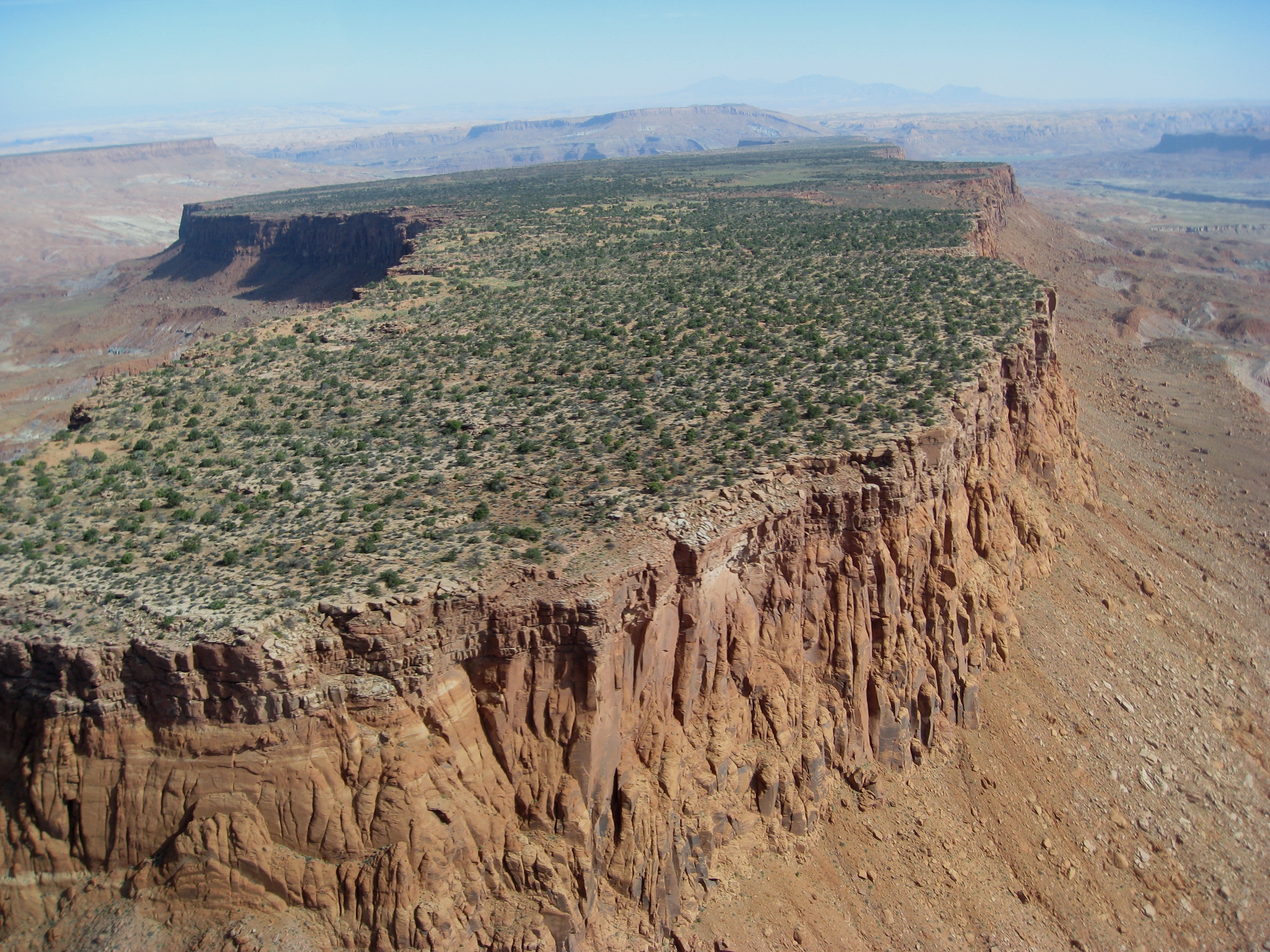|
Parish Of Olive
Olive, also known as Olive Downs, is a civil parish of Tongowoko County in far north west New South Wales, located at 29°02′40″S 141°52′14″E. Geography A dry creek bed seen from the cliff face near Olive Downs Station The geography of Olive Parish is mostly the flat, arid landscape of the Channel Country but includes a series of mesa known as the Jump ups. The parish is on the Silver City Highway and lies within the Sturt National Park. The Queensland-New South Wales border forms the northern boundary of the parish, which is marked by the Dingo Fence. The parish has a Köppen climate classification of BWh (Hot desert). ''(directFinal Revised Paper'' History The parish is on the traditional lands of the Yarli people. The parish is named for Olive Downs Station, a cattle run of 92,000 acres established between 1884 and 1886. The first recorded owners were Charles Murray and William Sanderson in 1889 but the property changed hands a number of times and ... [...More Info...] [...Related Items...] OR: [Wikipedia] [Google] [Baidu] |
Sturt National Park
The Sturt National Park is a protected national park that is located in the arid far north-western corner of New South Wales, in eastern Australia. The national park is situated approximately northwest of Sydney and the nearest town is , away. Established in 1972, the park is named in honour of Charles Sturt, a colonial explorer. The park features typical outback scenery of flat, reddish-brown landscapes. It was resumed from five pastoral properties. The Sturt National Park was featured in British documentary called ''Planet Earth''. The Dingo Fence was built along the national park's northern boundary. Flora Flora consists mostly of mulga bushland and arid shrubland, particularly Saltbush. After good rain the harsh landscape is transformed by the growth of wildflowers including Sturt's desert pea. Fauna Mammals At least 31 species of mammal have been recorded in the park. The most obvious to visitors include the red kangaroo, western grey kangaroo, eastern grey kangar ... [...More Info...] [...Related Items...] OR: [Wikipedia] [Google] [Baidu] |
Sydney Morning Herald
''The Sydney Morning Herald'' (''SMH'') is a daily compact newspaper published in Sydney, New South Wales, Australia, and owned by Nine. Founded in 1831 as the ''Sydney Herald'', the ''Herald'' is the oldest continuously published newspaper in Australia and "the most widely-read masthead in the country." The newspaper is published in compact print form from Monday to Saturday as ''The Sydney Morning Herald'' and on Sunday as its sister newspaper, ''The Sun-Herald'' and digitally as an online site and app, seven days a week. It is considered a newspaper of record for Australia. The print edition of ''The Sydney Morning Herald'' is available for purchase from many retail outlets throughout the Sydney metropolitan area, most parts of regional New South Wales, the Australian Capital Territory and South East Queensland. Overview ''The Sydney Morning Herald'' publishes a variety of supplements, including the magazines ''Good Weekend'' (included in the Saturday edition of ''The Sy ... [...More Info...] [...Related Items...] OR: [Wikipedia] [Google] [Baidu] |
Sidney Kidman
Sir Sidney Kidman (9 May 18572 September 1935), known as Sid Kidman and popularly named "the Cattle King", was an Australian pastoral farming, pastoralist and entrepreneur who owned or co-owned large areas of land in Australia in his lifetime. Early life Sidney Kidman was born on 9 May 1857 in Adelaide, in the colony of South Australia, the third son of George Kidman (died December 1857), farmer, and his wife Elizabeth Mary, née Nunn. Kidman was educated at private schools in Norwood, South Australia, Norwood and left his home near Adelaide at age 13 with only five shillings and a one-eyed horse that he had bought with his savings. He joined a drover (Australian), drover and learned quickly. He then worked as a roustabout and bullock-driver at Poolamacca Station, Poolamacca cattle station, and Mount Gipps Station. and later as a drover, Stockman (Australia), stockman and livestock trader. He made money trading whatever was needed, and supplying services (transport, goods, a but ... [...More Info...] [...Related Items...] OR: [Wikipedia] [Google] [Baidu] |
Olive Downs Station
Olive Downs Station is one of 7 former cattle stations in Sturt National Park in the north western Corner of New South Wales. History The station is on the traditional lands of the Yarli language, Yarli people. The first Ethnic groups in Europe, Europeans to the area were Charles Sturt and then Burke & Wills. The push for sheep pasture had reached the Darling River in the late 1840s and early 1850s, and by the early to mid-1860s pastoralists were moving up the Warrego River, Warrego and Paroo Rivers. By the late 1870s most of north-west New South Wales had been ‘claimed’ as pastoral properties though access to permanent water in the more arid country continued to be the key factor for establishing sheep stations.... The discovery of the Great Artesian Basin led to Well drilling, sinking of artesian bores and the beginnings of a major travelling stock route in 1884. Olive Downs Station was established between 1884 and 1886 but the actual date is uncertain. It was 92,000 acres ... [...More Info...] [...Related Items...] OR: [Wikipedia] [Google] [Baidu] |
Yarli Language
Yarli (Yardli) was a dialect cluster of Australian Aboriginal languages spoken in northwestern New South Wales and into Northeastern South Australia individually Malyangapa (Maljangapa), Yardliyawara, and Wadikali (Wardikali, Wadigali). Bowern (2002) notes Karenggapa as part of the area, but there is little data. Tindale (1940) groups Wanjiwalku & Karenggapa together with Wadikali & Maljangapa as the only languages in NSW that are behind the 'Rite of Circumcision' border - which suggests Wanjiwalku to also be part of the Yarli area. Classification The three varieties are very close. Hercus & Austin (2004) classify them as the Yarli branch of the Pama–Nyungan family. Dixon (2002) regards the three as dialects of a single language. Bowern (2002) excludes them from the Karnic languages The Karnic languages are a group of languages of the Pama–Nyungan family. According to Dixon (2002), these are three separate families, but Bowern (2001) establishes regular paradigmati ... [...More Info...] [...Related Items...] OR: [Wikipedia] [Google] [Baidu] |
Köppen Climate Classification
The Köppen climate classification is one of the most widely used climate classification systems. It was first published by German-Russian climatologist Wladimir Köppen (1846–1940) in 1884, with several later modifications by Köppen, notably in 1918 and 1936. Later, the climatologist Rudolf Geiger (1894–1981) introduced some changes to the classification system, which is thus sometimes called the Köppen–Geiger climate classification system. The Köppen climate classification divides climates into five main climate groups, with each group being divided based on seasonal precipitation and temperature patterns. The five main groups are ''A'' (tropical), ''B'' (arid), ''C'' (temperate), ''D'' (continental), and ''E'' (polar). Each group and subgroup is represented by a letter. All climates are assigned a main group (the first letter). All climates except for those in the ''E'' group are assigned a seasonal precipitation subgroup (the second letter). For example, ''Af'' indi ... [...More Info...] [...Related Items...] OR: [Wikipedia] [Google] [Baidu] |
Silver City Highway
Silver City Highway is a highway that links Buronga, New South Wales to the Queensland border via Wentworth, Broken Hill, and Tibooburra, in the arid Far West region of New South Wales; a short branch also connects to Calder Highway on the Victorian border at Curlwaa (signed as Calder Highway). Parts of the highway north of Tibooburra are unsealed. The namesake of the highway is derived from the moniker for Broken Hill - the "Silver City" - which the highway travels through. The highway is designated route B79 from Broken Hill to Buronga. Route The route passes through largely arid terrain, although there are multiple irrigated areas between Buronga and Wentworth in the highway's south. There is relatively flat terrain between Wentworth and Broken Hill that forms arid pastures for grazing. Around Broken Hill and a little to the north the Barrier Range is encountered, which is more hill than the rest of the route encountered so far, but not mountainous. North of there t ... [...More Info...] [...Related Items...] OR: [Wikipedia] [Google] [Baidu] |
Lands Administrative Divisions Of Australia
Lands administrative divisions of Australia are the cadastre, cadastral divisions of Australia for the purposes of identification of land to ensure security of land ownership. Most States of Australia, states term these divisions as county, counties, Parish (administrative division), parishes, Hundred (county division), hundreds, and other terms. The eastern states of Queensland, New South Wales, Victoria (Australia), Victoria, and Tasmania were divided into counties and parishes in the 19th century, although the Tasmanian counties were renamed land districts in the 20th century. Parts of South Australia (south-east) and Western Australia (south-west) were similarly divided into counties, and there were also five counties in a small part of the Northern Territory. However South Australia has subdivisions of hundreds instead of parishes, along with the Northern Territory, which was part of South Australia when the hundreds were proclaimed. There were also formerly hundreds in Tasma ... [...More Info...] [...Related Items...] OR: [Wikipedia] [Google] [Baidu] |
Mesa
A mesa is an isolated, flat-topped elevation, ridge or hill, which is bounded from all sides by steep escarpments and stands distinctly above a surrounding plain. Mesas characteristically consist of flat-lying soft sedimentary rocks capped by a more resistant layer or layers of harder rock, e.g. shales overlain by sandstones. The resistant layer acts as a caprock that forms the flat summit of a mesa. The caprock can consist of either sedimentary rocks such as sandstone and limestone; dissected lava flows; or a deeply eroded duricrust. Unlike ''plateau'', whose usage does not imply horizontal layers of bedrock, e.g. Tibetan Plateau, the term ''mesa'' applies exclusively to the landforms built of flat-lying strata. Instead, flat-topped plateaus are specifically known as '' tablelands''.Duszyński, F., Migoń, P. and Strzelecki, M.C., 2019. ''Escarpment retreat in sedimentary tablelands and cuesta landscapes–Landforms, mechanisms and patterns.'' ''Earth-Science Reviews, no. ... [...More Info...] [...Related Items...] OR: [Wikipedia] [Google] [Baidu] |
Channel Country
The Channel Country is a region of outback Australia mostly in the state of Queensland but also in parts of South Australia, Northern Territory and New South Wales. The name comes from the numerous intertwined rivulets that cross the region, which cover 150,000 km². The Channel Country is over the Cooper and Eromanga geological basins and the Lake Eyre Basin drainage basin. Further to the east is the less arid Maranoa district. Geography Birdsville and Windorah are the most prominent towns in the area. Other settlements include Betoota and Bedourie. Haddon Corner is also located in the Channel Country. The Channel Country is the location for a majority of Min Min light sightings. It is also home to at least two important bird areas, Lake Yamma Yamma and the Lake Machattie Area. The Channel Country features an arid landscape with a series of ancient flood plains from rivers which only flow intermittently. The principal rivers are Georgina River, Cooper Creek and th ... [...More Info...] [...Related Items...] OR: [Wikipedia] [Google] [Baidu] |



.jpg)




